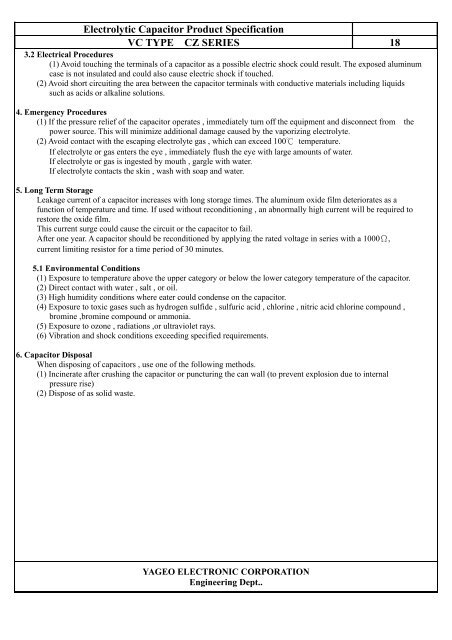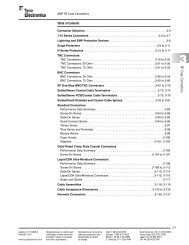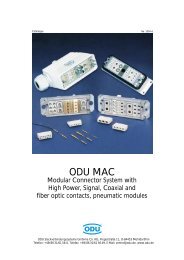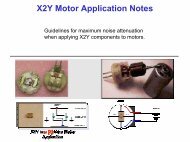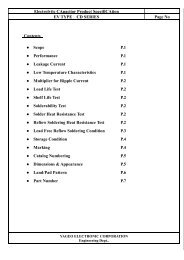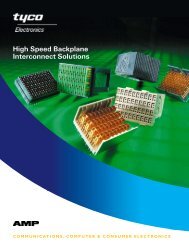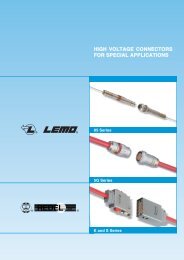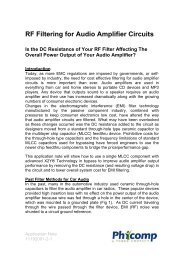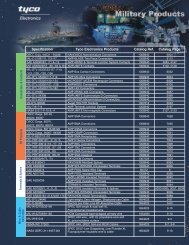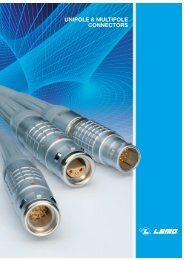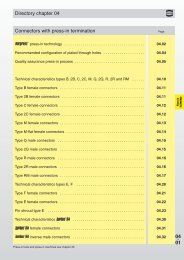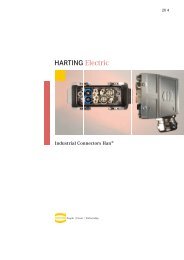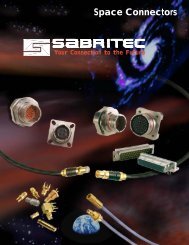Electrolytic Capacitor Product Specification VC TYPE CZ SERIES ...
Electrolytic Capacitor Product Specification VC TYPE CZ SERIES ...
Electrolytic Capacitor Product Specification VC TYPE CZ SERIES ...
Create successful ePaper yourself
Turn your PDF publications into a flip-book with our unique Google optimized e-Paper software.
<strong>Electrolytic</strong> <strong>Capacitor</strong> <strong>Product</strong> <strong>Specification</strong><br />
<strong>VC</strong> <strong>TYPE</strong> <strong>CZ</strong> <strong>SERIES</strong> 18<br />
3.2 Electrical Procedures<br />
(1) Avoid touching the terminals of a capacitor as a possible electric shock could result. The exposed aluminum<br />
case is not insulated and could also cause electric shock if touched.<br />
(2) Avoid short circuiting the area between the capacitor terminals with conductive materials including liquids<br />
such as acids or alkaline solutions.<br />
4. Emergency Procedures<br />
(1) If the pressure relief of the capacitor operates , immediately turn off the equipment and disconnect from the<br />
power source. This will minimize additional damage caused by the vaporizing electrolyte.<br />
(2) Avoid contact with the escaping electrolyte gas , which can exceed 100 temperature.<br />
If electrolyte or gas enters the eye , immediately flush the eye with large amounts of water.<br />
If electrolyte or gas is ingested by mouth , gargle with water.<br />
If electrolyte contacts the skin , wash with soap and water.<br />
5. Long Term Storage<br />
Leakage current of a capacitor increases with long storage times. The aluminum oxide film deteriorates as a<br />
function of temperature and time. If used without reconditioning , an abnormally high current will be required to<br />
restore the oxide film.<br />
This current surge could cause the circuit or the capacitor to fail.<br />
After one year. A capacitor should be reconditioned by applying the rated voltage in series with a 1000,<br />
current limiting resistor for a time period of 30 minutes.<br />
5.1 Environmental Conditions<br />
(1) Exposure to temperature above the upper category or below the lower category temperature of the capacitor.<br />
(2) Direct contact with water , salt , or oil.<br />
(3) High humidity conditions where eater could condense on the capacitor.<br />
(4) Exposure to toxic gases such as hydrogen sulfide , sulfuric acid , chlorine , nitric acid chlorine compound ,<br />
bromine ,bromine compound or ammonia.<br />
(5) Exposure to ozone , radiations ,or ultraviolet rays.<br />
(6) Vibration and shock conditions exceeding specified requirements.<br />
6. <strong>Capacitor</strong> Disposal<br />
When disposing of capacitors , use one of the following methods.<br />
(1) Incinerate after crushing the capacitor or puncturing the can wall (to prevent explosion due to internal<br />
pressure rise)<br />
(2) Dispose of as solid waste.<br />
YAGEO ELECTRONIC CORPORATION<br />
Engineering Dept..


